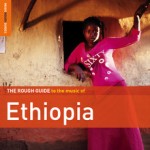. issue XIII : v .
. artist : mulatu astatke .
. album : mulatu of ethiopia .
. year : 1972 .
. label : worthy .
. grade : a minus .
A moody reaction to the bustling nightlife of 1960’s Ethiopia, the output of the Berklee-trained Mulatu Astatke kick-started the Ethio-Jazz movement and established himself as a purveyor of some of the finest nocturnal constructions. Mulatu of Ethiopia‘s mixture of dusty mystique, syncopated minor key basslines, and needling vibraphone and horn improvs form an extremely narrow and diamond-eyed approach to composition. Repetitive mood pieces dominate. Revolving basslines support funky keyboards and taunting saxophones. Occasionally, exotic woodwind charts flow into the picture to inundate their surroundings with inviting tropicalia. Mulatu never sits too long in the warmth, however, and takes several brooding turns on vibes, typically as introductions or counterpoints. His efforts frequently become low lit highlights. A few songs even escape the endlessly enjoyable ancient pits of doom, as the album is content enough in its discontent to throw a few curveballs at Coltrane. For example, the gothic cosmopolitan out-for-a-night on the seedy side of town in “Mascaram Sebeta” stumbles upon quite a few crimes on his walk home from the corner club, witnessing a dramatic build to a great walking bassline scoring an ever-so-subtle release of bossa-nova tension. The album occasionally slips into entertaining chaos: every musician involved tries to poke their head out after a sad-sack shootout, causing a cacophony of malaise that builds satisfyingly to anti-conclusions. Several songs come across as table-setting with no main course, which prove to be surprisingly enjoyable in Mulatu’s resolve to not resolve. The combination of his withholding nature with some spread out cathartic balms play off each other well, creating the effect of the album being one long and ominous piece of music. Mulatu of Ethiopia has a stranglehold on rustic, dark jazz and would be the perfect companion for any night stalking the streets.
by Ryan Myers




